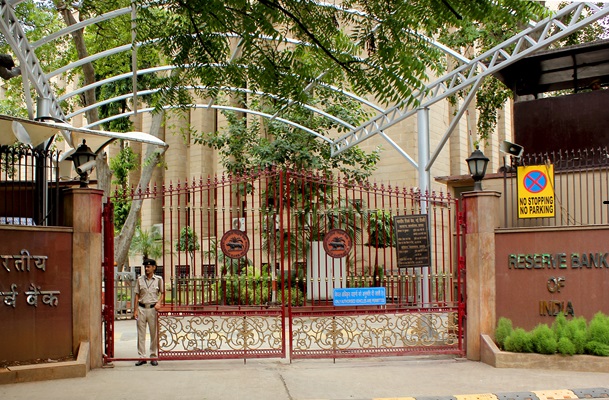.png)
Core Issue With India’s Inflation Isn’t Going Away
India’s headline inflation may have cooled, but seasonal effects mask the stickier rise in core prices—leaving RBI’s policy pivot on shaky ground.


By Dhananjay Sinha
Dhananjay Sinha, Co-Head of Equities and Head of Research at Systematix Group, has over 25 years of experience in macroeconomics, strategy, and equity research. A prolific writer, Dhananjay is known for his data-driven views on markets, sectors, and cycles.
April 16, 2025 at 4:58 PM IST
The moderation in headline retail inflation to 3.3% for March 2025 comes as a surprise, especially against the Reserve Bank of India’s year-end forecast of 4.8%. Coming after two consecutive rate cuts totalling 50 basis points since February, this reading appears to reinforce the central bank’s recent shift toward an accommodative stance. However, the decline in inflation is largely seasonal, driven primarily by base effects and a sharp fall in vegetable prices. The underlying momentum in core categories tells a more disquieting story.
Core inflation has hardened to 4.1%, rising 100 basis points over the past 10 months. This marks a reversal from the previous trend of elevated food inflation offset by easing core pressures. In contrast, the current configuration is one of falling food and rising core prices.
The softening in wholesale inflation, which moderated to 2.1% in March 2025 from 2.6% in December, was led by a slowdown in primary articles, especially food, and in the manufacturing of food products. The full-year average WPI print for 2024-25 stood at 2.3%, compared to deflation of 0.7% in 2023-24. Yet the rise in cost pressures across segments of non-food manufacturing signals a less benign trend beneath the surface.
This pattern is mirrored in retail inflation for food and beverages. A 7% year-on-year deflation in vegetable prices and a 2.7% decline in pulses helped pull rural inflation down to 3.3% in March, from 3.8% in February. Cereal inflation also moderated, and the seasonal drop in vegetable prices—35% from the October peak—was sharper than the historical norm. Protein inflation has softened as well.
In contrast, urban inflation edged up to 3.4% in March from 3.3% the previous month, reflecting the drag from rising core components. Inflation in prepared meals and beverages, for instance, has been rising steadily since July 2024. While cereals and pulses are easing, these processed categories appear to be benefiting from some revival in pricing power in the FMCG sector.
Moreover, inflation in fruits surged to 16.2% year-on-year, the highest since October 2014, while the oils and fats category rose 17.1%, a three-year high, both reflecting global price effects. The persistence of these components tempers the notion of broad-based food disinflation.
Meanwhile, fuel and light inflation re-entered positive territory, rising to 1.48% year-on-year in March after a prolonged deflationary phase that lasted from September 2023 through February 2025. Electricity and kerosene prices have risen, contributing to wholesale electricity inflation of 5.5%, which had been negative in 11 of the past 12 months. The increase comes despite softening diesel demand and electricity usage, and could persist as states move to raise tariffs amid higher-than-usual summer temperatures.
Core inflation’s upward momentum is also visible in non-traded services. The miscellaneous segment rose to a 20-month high of 5% in March, with broad-based pressures including healthcare and transport services. Gold and silver ornament inflation has been particularly strong, tracking global bullion prices. Urban clothing and footwear inflation has also accelerated, aligning with the recent pickup in wholesale inflation in apparel.
Taken together, the inflation backdrop reflects a shift in composition rather than a meaningful easing of pressures. While headline inflation has fallen, the underlying trends suggest otherwise. The rise in core inflation is accompanied by visible stress in consumption. Volume growth in consumer goods remains muted, railway passenger traffic is soft, and the RBI’s household confidence surveys continue to signal caution. Even the premium segment, until recently more resilient, is now showing signs of strain.
These patterns are corroborated by formal sector data, where compensation growth has slowed, and by rural indicators, where real wages remain under pressure. Against this backdrop, the sustained creep in core inflation suggests that any reversal in food prices—currently subdued due to seasonal factors—could leave household consumption even more vulnerable.
The government’s decision not to pass on the benefit of lower global crude prices—choosing instead to preserve excise duties—further limits the scope for discretionary income relief. This mirrors the policy stance seen during the 2014–17 period and reduces the disinflationary transmission from falling oil prices.
External risks add further complexity. Ongoing global trade conflicts may result in both inflationary and disinflationary spillovers. Supply chain disruptions could tighten domestic availability and push up prices, while retaliatory tariffs, if implemented by India, would add further inflationary impulses. Conversely, increased dumping of goods by China could exert disinflationary pressure.
The outlook is complicated by a narrowing fiscal bandwidth. Slowing tax collections reduce the room for fiscal stimulus at a time when growth impulses are already weak. The burden of macroeconomic support, therefore, is shifting increasingly to the monetary side, although the efficacy of that support remains uncertain.
The diverging trends of core and non-core inflation pose a challenge to those who previously advocated for rate easing on the basis of falling core prices. With core now rising, and consumption still weak, the recent moderation in headline inflation offers little policy clarity—and even less relief to households.






